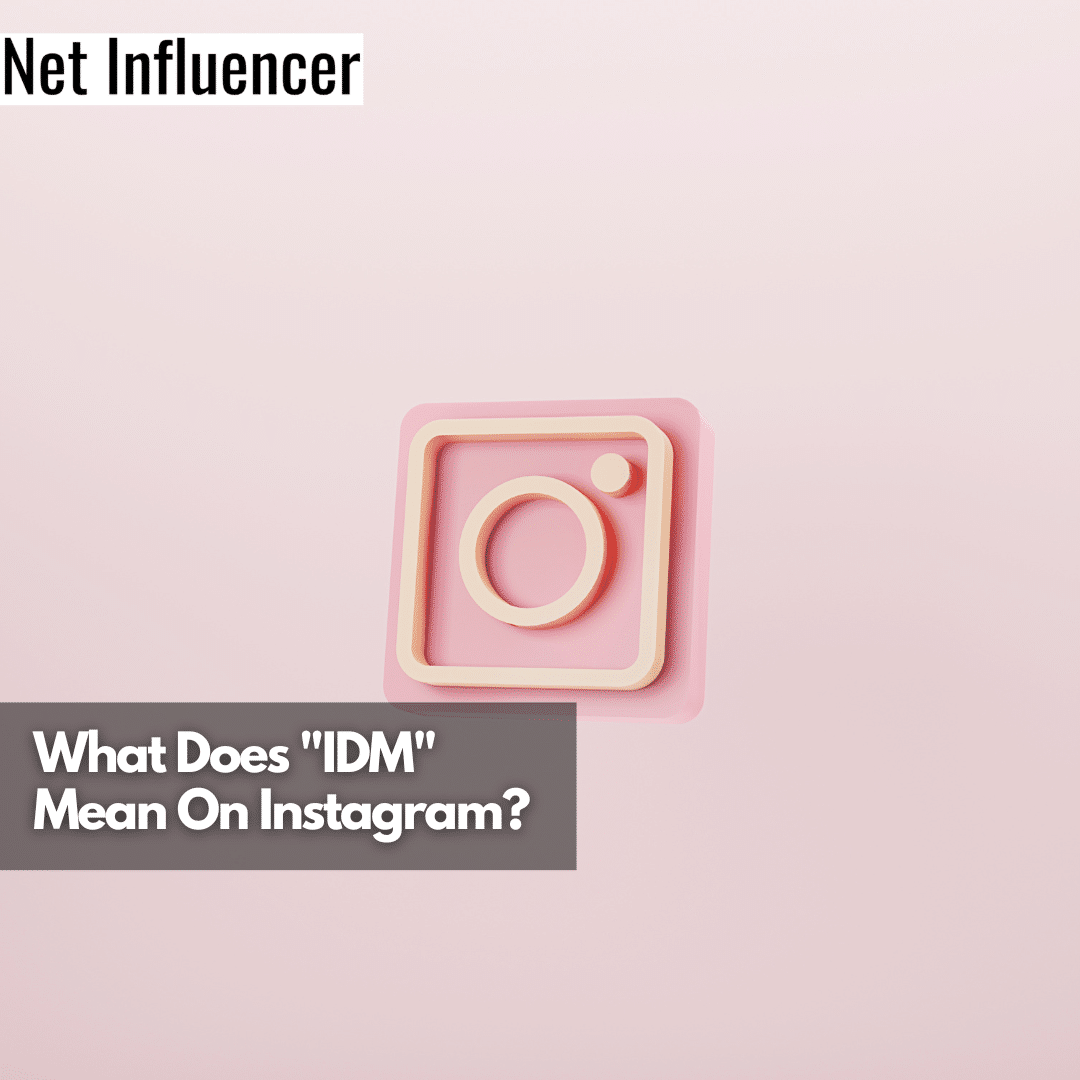Platform
What Does “IDM” Mean On Instagram?
The Meaning and Usage of “IDM”
The slang “IDM” stands for “I don’t mind.”
The expression expresses that he or she agrees with or has no problem with a particular situation, request, or action.
It’s also a common way to express apathy or disinterest, meaning “I don’t care”.
“IDM” can mean different things depending on the situation and the platform used.
The term “IDM” is also an abbreviation for “Intelligent Dance Music”.
Here, it is used to describe a specific type of electronic music that features intricate rhythms, elaborate sound structures, and a focus on experimentation.
Example:
“Enjoying the mesmerizing beats of “IDM”. #music #”IDM” #electronic”

Both the abbreviations “I don’t mind” and “Intelligent Dance Music” are frequently used in text-based conversations, captions, comments, and hashtags on Instagram and almost all other social media.
Mostly you use “IDM” (I don’t mind) to answer questions.
For example: If someone sends you a DMS: “Is it okay if I come to your house to spend the night? You answer “IDM”.
IDM means your agreement, but it is not the strongest.
It shows no excitement and only maudlinly means that you have no problem fulfilling the request of the person asking you for something.
If you want to give your audience a more positive response, use something like “Always,“ “I am honored,“ “With pleasure,” and “Of course,” rather than answering them with “IDM”.
The Origin of “IDM”
The acronym “IDM” became popular in online chat rooms and other forms of colloquial conversation.
As mentioned earlier, it’s a shorthand for expressing disinterest or nonchalance.
In the early 1990s, “Intelligent Dance Music” (“IDM”) was coined to describe an electronic music genre that was more complex, experimental, and brain-stimulating than standard dance music.
IDM was created because the term “electronica” wasn’t sufficient to describe the nuances of this type of music.
The electronic music scenes of London, Sheffield, and Manchester in the United Kingdom and other European and American cities are foundational to the history and development of “IDM” as a musical style.
Popular names in industrial dance music (“IDM”) include Aphex Twin, Autechre, and Boards of Canada.
With the rise of the electronic dance music subgenre, the term “IDM” is used interchangeably between the two meanings (“I don’t mind” and Intelligent Dance Music”).
However, most people on social media use it to express “I don’t mind”.”

This meaning is used extensively in online and offline messages by all generations, including Generation X and Boomers, making it as famous an abbreviation as “WYO,” which stands for “What You On?” or “Where You At?”
The second meaning is used only by Generation Z music fans.
How to Use “IDM” in Content Creation
Including “IDM” in your comments, captions, or hashtags is a sign of openness, flexibility, or apathy.
It’s a way to let people know that you are open to others’ viewpoints, options, or experiences.
If you combine “IDM” with visuals, such as photos or videos, you can strengthen your message’s impact.
Also, if you want to convey a certain message or emotion to your audience, the visuals must reflect that.
Here are some recent instances of the hashtag “#IDM” appearing in trending posts on social media:
Example 1 (Instagram post):
Caption: No worries “IDM” at all! I know how automobiles can be. Take ur time#newbeginnings #”IDM” #openmindedness
Example 2 (Twitter comment):
Caption: Sweet, I love “IDM”! I’m there.
#music #”IDM” #innovation
Always remember to customize your use of “IDM” to the particular platform, its character restrictions, and the type of content you’re producing.
It allows you to engage your audience and deliver the desired message if you use it properly and in accordance with the platform’s conventions.
Also, before you start using “IDM” or any other slang like “TTM” and “ATP” in your content creation, it is crucial to understand the demographics and interests of your target audience on the social media platform you are using.
Creators and influencers need to make sure that the words and hashtags they use in their texts make sense in a larger context and that they fit into the flow of the rest of the content.

Conclusion
Using “IDM” shows your openness and acceptance and helps you build a closer connection with your audience.
It makes your text more readable and engaging.
And most importantly, using slang terms shows that you are familiar with contemporary language and culture, which makes your content seem authentic.
This leads to more people talking about, commenting on, sharing, and/or liking your content.
More slang and colloquial terms from the Internet can be found here.





















